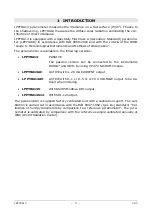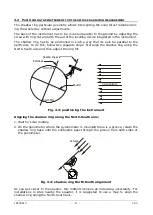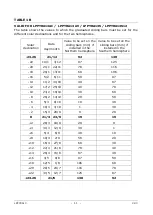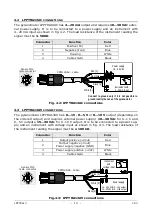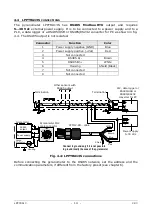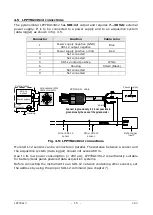
LPPYRA13
- 4 -
V2.3
2
WORKING PRINCIPLE
LPPYRA13 pyranometer is based on a thermopile sensor. The thermopile sensitive sur-
face is coated with a black matt paint, which allows the pyranometer not to be selec-
tive at different wavelengths.
In order to grant the thermopile a proper thermal insulation from the wind and reduce
the sensitivity to thermal irradiance, LPPYRA13 is equipped with two concentric domes
having 50 mm and 32 mm outer diameter. The domes protect the thermopile from the
dust, which might change spectral sensitivity if it lies on the black surface,
The pyranometer spectral range is determined by the transmission of the two glass
domes. Thanks to the use of a new material for the manufacturing of the domes, the
spectral range has been further extended to short wavelengths starting from 283 nm.
Considering a standard solar spectrum, the portion of solar irradiation measured by
the pyranometer is greater than 99.8%. Figure 2.1 shows the relative spectral sensi-
tivity of the LPPYRA13 pyranometer and a standard solar spectrum.
Fig. 2.1: LPPYRA13 pyranometer relative spectral sensitivity (blue line) com-
pared with a standard solar spectrum (red line)
Radiant energy is absorbed by the thermopile black surface, thus creating a difference
of temperature between the center of the thermopile (hot junction) and the pyranom-
eter body (cold junction). Thanks to the Seebeck effect, the difference of temperature
between hot and cold junction is converted into a Difference of Potential.
A second thermopile, not accessible by light, is mounted inside the instrument. This
second thermopile, connected in anti-series with respect to the sensor exposed to
light, reduces the signals due to sudden temperature changes of the pyranometer
(thermal shocks).
In order to minimize sensitivity changes with temperature, LPPYRA13 is equipped with
a passive compensation circuit. The graph in figure 2.2 shows the typical variation of
sensitivity at different temperatures. The deviations are calculated from the sensitivity
measured at 20 °C.
Summary of Contents for Delta OHM LPPYRA13
Page 32: ...LPPYRA13 32 V2 3 NOTES...
Page 33: ...LPPYRA13 33 V2 3 NOTES...
Page 34: ...LPPYRA13 34 V2 3 NOTES...
Page 35: ......



